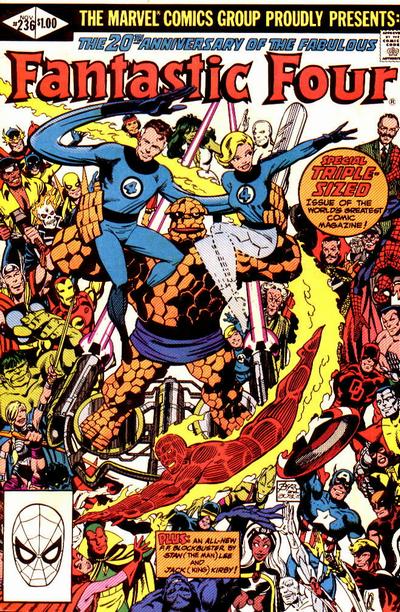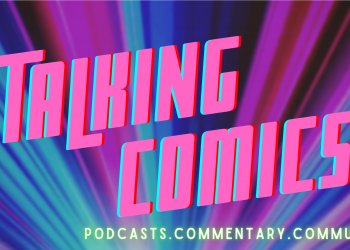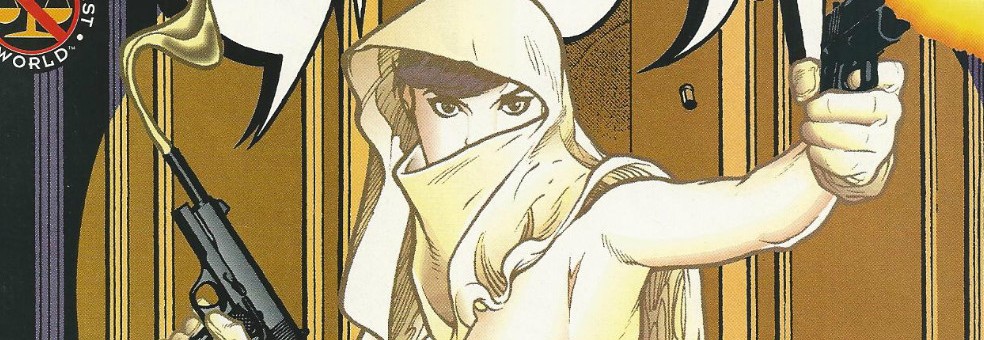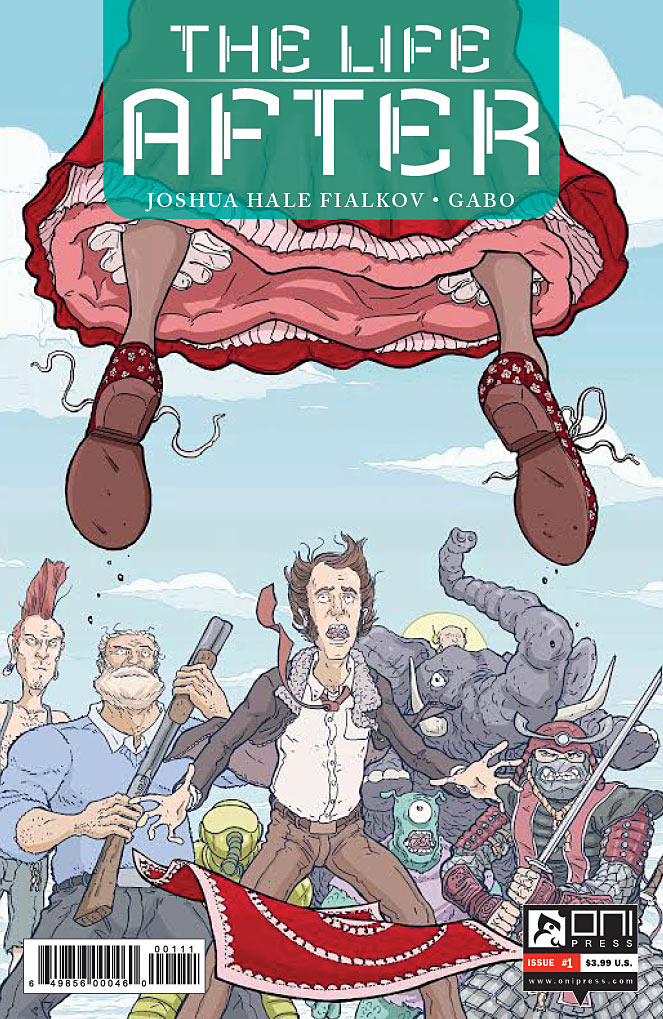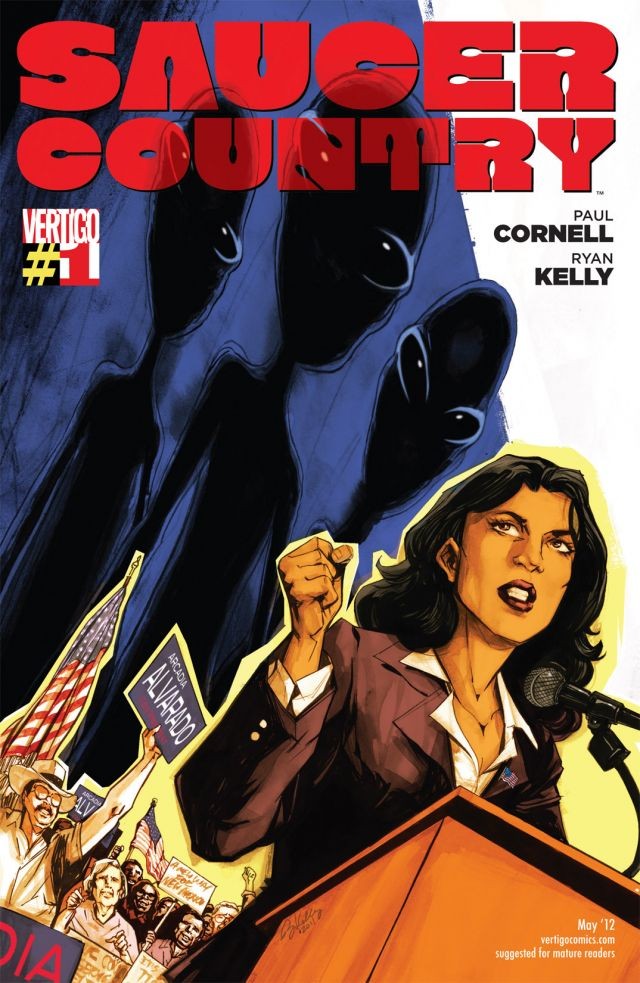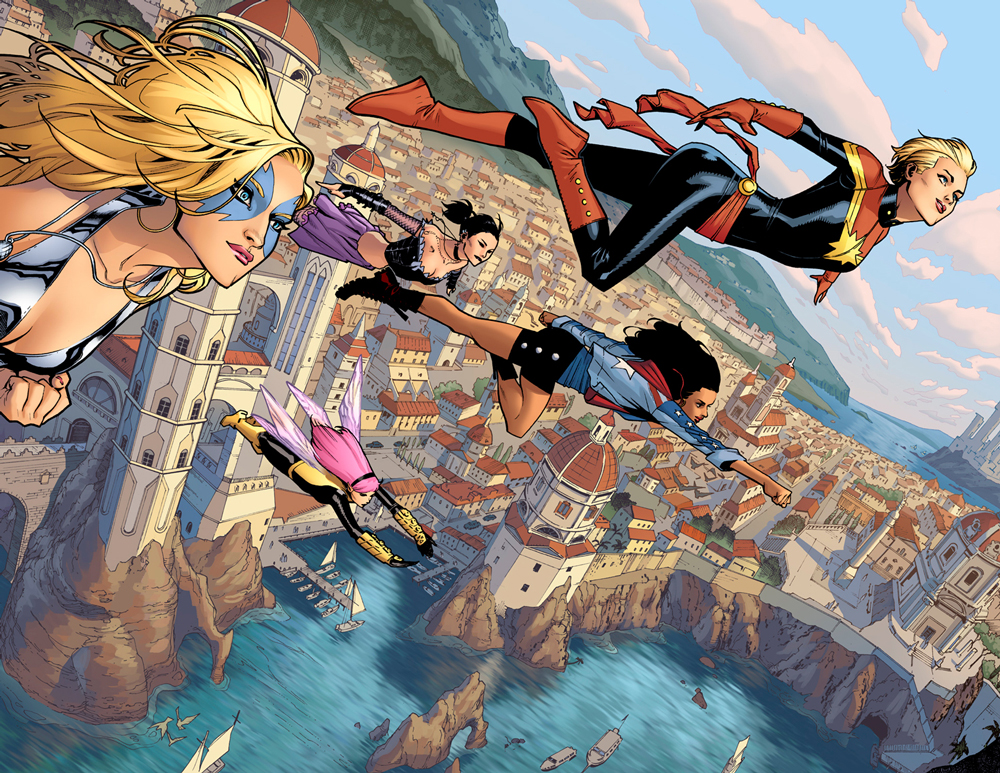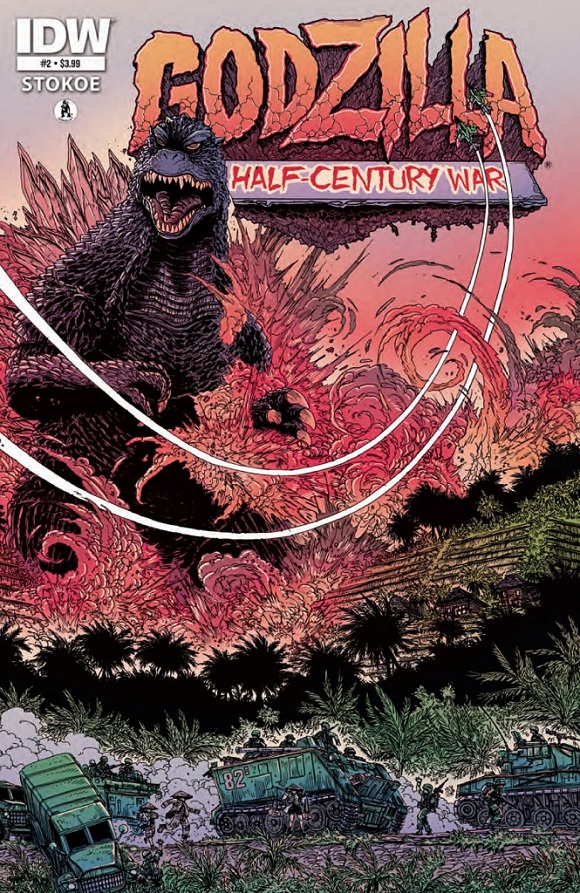The Fantastic Four, the legendary comic book that defined and redefined the Marvel Universe since its launch in 1961 under the historic duo of Stan Lee and Jack Kirby. For 102 issues and 6 Annuals Lee and Kirby wove a beautiful and forward thinking tale of a super heroic family all while laying the foundation for what would become the Marvel Universe. (For more on my take on the Lee & Kirby Era see Part 1 of My Fantastic Four Journey). In the wake of Lee and Kirby ending their run the Fantastic Four continued as The Worlds Greatest Comic Magazine but its second Gold Standard is linked with comic legend John Byrne’s run in the middle of the ‘80s.
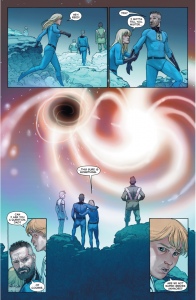
The past few years have not been kind to the Fantastic Four. Marvel Executives decided to wage a petty battle of wills with 20thCentury Fox, who own the film rights to Marvel’s first family. As 20thCentury Fox neared the release of their sadly horrific take on the Fantastic Four in 2015 Marvel abruptly cancelled their flagship title. Rather then give any aid of advertisement to 20thCentury Fox they simply ceased production on the Fantastic Four and exiled Reed, Sue, Franklin, Valeria, and the Future Foundation Kids to…. well, truthfully we’re not sure yet. All we know is in the wake of Secret Wars Reed, Sue, and the children were seen spawning a Marvel multiverse. Luckily this catastrophe is about to be redeemed as new Fantastic Four comic will hit the shelves in August under the loving care of writer Dan Slott and artist Sara Pichelli. In response this to this I decided to remedy a gap in my comic reading history and dive deep into Marvel’s First Family and to do so I reached out to Talking Comics own Bob Reyer to help guide me on my journey. For all the faithful listeners out there, you know Bob’s love of the Fantastic Four is deep and I could think of no one else I would want to take this journey with. Bob first and foremost pointed me toward the Lee and Kirby run, which was a daunting undertaking but one of the most satisfying reading experiences I have ever had. Secondly Bob steered me back to the Byrne era, an era I am more familiar with but one that I felt I needed to read again to truly understand what Byrne was doing on his run, which was recapturing the Lee and Kirby era and building it.

My grandfather bought me my first comic book in 1979 when I was five years old and over the course of the next few years I really got into reading and collecting comics. So it should not be shocking that I became a huge John Byrne fan, and still am as I buy most collection of his work from the ‘70s, ‘80s, and ‘90s and I also hold the distinct honor of being the only customer at my LCS to have the Superman/Batman: Generations 3 maxi-series on my pull list. In the ‘80s Byrne was a superstar comic creator, propelled by his beautiful artwork on The Uncanny X-Men with Chris Claremont, Byrne became the top artist at Marvel and as he left The Uncanny X-Men in 1981 Marvel gave him full creative control to the World’s Greatest Comic Magazine with Fantastic Four #232 as he was both writer and artist.
Note: Bob gave me so much useful information and wonderful pieces on this era so as I did in Part One, I will make note when they are Bob’s words rather than my own.
Bob-
Now, “all the in-between years” (to quote Frank Sinatra’s “All The Way”), have some fine stuff, in particular by writer Gerry Conway in issues #133 through #152, or Roy Thomas & George Perez in #164–#178, (More on these in Part 3-JB) but it’s with the coming of writer and artist John Byrne in 1981 with issue #232 that the series enjoyed a second “Golden Age”. All of his run, through to #293, are wonderful….
As Bob states the entirety of the run is a wonderful read but those early issues are where the ramifications of Byrne are truly amazing. His beautiful realistic artwork took the book up a notch and his classic storytelling and story-lines helped to reestablish the first family as a must read comic each month. It was also clear from the outset that Byrne was a fan of Lee and Kirby’s run on the book and he was looking to return Marvel’s First Family to the glory they had had under their original legendary creators. The structure of Byrne’s run is also reminiscent of the Lee/Kirby run as it is a large overarching narrative with single issues, multi-story arcs, as well as multiple callbacks to previous issues. I’ve read Byrne’s run before but I will say that reading it after reading the entirety of the Lee/Kirby era I found so many more layers to Byrne’s work here and actually enjoyed it more than I had on previous readings. It’s also clear from the outset that Byrne was on a mission to restore not only the Fantastic Four to their rightful place as the flagship title for Marvel but also to restore the pantheon of villains and extended characters to their previous glory, most notably Doctor Doom and Galactus, both of whom have extended story arcs within the Byrne run.
Bob-
Fantastic Four #236: This was the 20th Anniversary issue, and “Terror in a Tiny Town” is probably my second favorite single issue! I can’t say too much without spoiling, but it’s a story that brings in a lot of deep Marvel history without feeling like an archaeological dig!

Although Byrne’s run began with Fantastic Four #232, it was with this issue that he really found his groove. It’s obvious from the beginning of his time with Marvel’s First Family that John Byrne wanted to place Doctor Doom as their most dangerous foe and over the course of his 60+ issue run Doom’s narrative is a crucial part of the long story being told, as is the evolution of the character. In this beautiful one off issue Doom has captured the Fantastic Four and Alicia Masters and has wiped their memories and placed them in a small community with dull and ordinary lives. Yet shared dreams for our protagonists show them that things are not what they seem and we eventually learn that the Fantastic Four’s minds have been placed in miniature robots while there Doctor Doom holds actual bodies. There are several highlights of this issue as well as emotional beats. I loved the fact that even though it is 1981 the FF are placed in a town that is circa 1961, when The Fantastic Four #1 was first released. I also enjoyed that Doom made Reed Richards a professor but a barely competent professor who is constantly being chewed out and made aware of his inferiority by his department head. Reed feels inferior and unworthy of his position, unaware for much of the issue that Doom is playing the part of the department head and is living out his own personal fantasy that he is smarter than Reed. Obviously the FF overcome their imprisonment and thus begins a Doctor Doom arc that will really run throughout the entirety of Byrne’s run.
Bob-
Fantastic Four #245 “Childhood’s End”: A mysterious adversary takes out three of the Four, and only Sue can stop him…and there’s an amazing reason. The conclusion of this tale features a revelation about Ben Grimm that will have you reaching for the Kleenex.
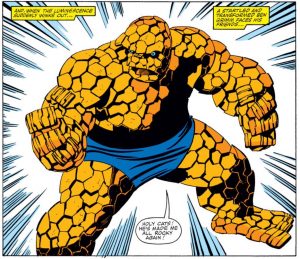
This issue was a trip as we start to see the extent of Franklin’s powers, as he will one day become the most powerful mutant on the planet. Here we see an aged Franklin who cannot grasp the situation since his mind is clouded by the rapid aging. Sue is the one who finally reaches him and the ending is a tear-jerker as Franklin tries to grant his uncle Ben his one last wish, and as he does so Ben remains the Thing. Ben thinks he failed but in touching his mind, Franklin has discovered that deep within his psyche Ben is so fearful that Alicia won’t love him if he is not the Thing that he does not want to change back. (The scene as Franklin shares this with his father, and then Reed relates it to Sue…just heart-breakingly beautiful stuff!–Bob) It’s a great single issue and also serves another purpose as we get the rocky Thing back. Prior to Byrne taking over the title Ben had been returned to his first state as the Thing, when he looked more like molten rock rather then the Thing we came to know. I don’t know if Byrne intended this or if it just happened by chance but I’m glad that he did, as I like the rocky Thing a lot more than the molten rock version.

Fantastic Four #251-#256 & The Avengers #233“The Negative Zone Saga”: I had to throw these issues in as I think they really reflect that the Fantastic Four are not just superheroes but also explorers. Over the course of these 6 issues the Fantastic Four go exploring in the Negative Zone as Reed has constructed a new entryway to that parallel universe and even though to them they will feel like they’ve been gone for months in reality it will only be a few hours. So leaving Franklin in the care of Alicia the FF goes exploring and adventure over the course of the next few issues, which are one and done adventures in the Negative Zone. What Reed does not know is that Annihilus has used his bridge to come to the Marvel 616 universe where he captures and tortures Alicia and Franklin. The Avengers are called in as Annihilus tries to destroy both Universes and the FF return in the nick of time as they transverse back from the Negative Zone, which also changes their classic costumes of blue and black to black and white, which they will wear for years going forward. Byrne’s creativity was at an all time high here as he really tapped into his love of Sci-Fi, Star Trek, and experimental story telling. A really fun story line that will have ramifications down the line since Sue conceives a baby while they are traveling in the Negative Zone, and just like with Franklin’s pregnancy during the Lee/Kirby run, Byrne treats the pregnancy as part of his narrative and sees Sue take a leave of absence from the team as well as having Reed and Sue along with Franklin take on secret identities and relocate to the suburbs to lead a more normal life.
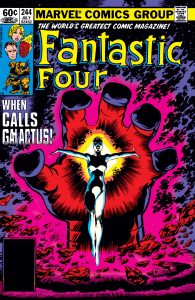
Bob-
Fantastic Four #258–#260: Doom strikes a bargain with Terrax to battle the FF, and then he’ll destroy all of them when they’re weakened from the struggle!
Doom returns in these issues as he refocuses on his hatred for the Fantastic Four. Since #236 Doom has been dethroned and restored to power in Fantastic Four #246-247 once the FF realizes that the people of Latveria like Doom as their king and the country is safer with him in charge. In this story Doom returns some of the cosmic power to Terrax (Galactus’ Herald who was depowered earlier in Byrne’s run-more on that later). Doom wants to use Terrax to destroy the FF and he does a good job of it until the Silver Surfer intervenes (the only time the Surfer appears in Byrne’s run). The culmination leaves Terrax and Doom both seemingly dead but in comics nothing is ever as it appears.
Bob-
Fantastic Four #267 “A Small Loss”: Speaking of crying, no matter how many times I read this, the last panel wrecks me.
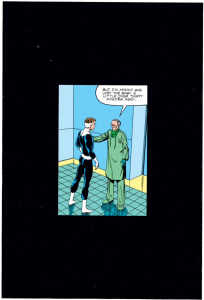
Another tearjerker as Sue is in labor and since the baby was conceived in the Negative Zone there are complications. Reed has called together Marvel’s foremost experts on radiation. The assembled experts include Bruce Banner (the Hulk), Michael Morbius (the Living Vampire), and Walter Langkowski (Sasquatch from Alpha Flight), but these assembled doctors think they need another expert, Otto Octavious AKA Doctor Octopus. Otto seems receptive at the start but then he summons his arms and chaos ensues. I loved the dynamic of flexible Reed going against Otto and his arms over the city-scape of New York City. Reed finally gets Otto under control and to the hospital where’s he’s informed that Sue lost the baby thirty minutes earlier. I remember reading this as a kid and knowing that it was tragic but it hit me even harder this go-around as I cannot imagine the tragedy if either of my children had been lost. I also think that Byrne did an admirable job of portraying the loss going forward as both Reed and Sue deal with the loss, each in their own way but also together as a real couple would. Reed and Sue have had problems over the years but this felt like a true moment that solidified their bond.
Bob-
Because it jumps around, I’m not sure where to place this, but”The Trial of Galactus/Reed Richards” arc, which began in Fantastic Four #242-#244 and then picked up again in issues #257-#262 is superb! This was all collected in trade as “The Trial of Galactus”, with some condensing but also some new linking material, and it reads as one epic graphic novel!

Oh, The Trial of Galactus, what a wonderful extended storyline from the early part of the Byrne run! Beginning in Fantastic Four #242 when Terrax, the current Herald of Galactus who is on the outs with his master comes to Earth to cause havoc. He rips the Island of Manhattan from the ground and levitates it into space, with only the power of the Invisible Girl and her forming a force field dome over the city to keep the atmosphere in. It is during this battle that we find out that Galactus is dying. He needs to feed and if necessary he will feed on Earth. I not only loved this issue and the next where Galactus arrives not only because they are great comics but because it is what was so great about the early to mid-‘80s Marvel in the fact that other heroes would just pop into a book. This issue has Thor, Iron Man, Daredevil, and Spider-Man while Captain America and Doctor Strange join in the third part of the initial arc. While many of the assembled heroes don’t have a qualm with letting Galactus die, Reed knows better and that Galactus is a force of nature and the universe needs him. He then saves Galactus while Johnny’s girlfriend Frankie Raye offers herself up to become the new herald of Galactus and she becomes Nova and leaves with Galactus, breaking Johnny’s heart.

The ramifications of saving Galactus become apparent a year later as Nova leads Galactus to a new planet, a planet that suits his needs perfectly, and a planet that happens to be the Skrull home world. Since Reed is responsible for Galactus still living, a tribunal of alien worlds, led by Lilandra of the Sh’iar, kidnap Reed and try him for saving Galactus. In one of the strangest issues (Marvel used to get away with doing crazy stunts during “Assistant Editors Month”) Byrne wrote himself into Fantastic Four #262 as the chronicler of the trial. Uatu the Watcher comes to bear witness, as does the chief witness for the defense, Odin. Galactus arrives in the end and he and Uatu summon Eternity to relate to the assembled aliens that Galactus is necessary for cosmic order and therefore Reed cannot be found guilty. Thus ends the Trial of Galactus or rather the Trial of Reed Richards.
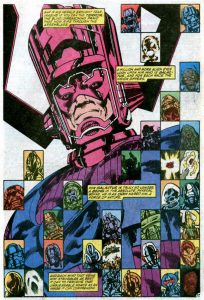
Not only was the Trial a great extended story it also allowed Byrne to remedy some of the issues that Galactus had created over the years. He fleshed out the origin story a little more and he tackled the fact that Galactus appears to be different heights in different appearances. Byrne made it so that Galactus shrinks with the less energy he has and he crows as he gains more substance. It’s also revealed that every alien race sees Galactus differently, just like a deity may appear in different forms so does Galactus. Its obvious Byrne had a deep affection for Galactus and wanted to restore him to more of a cosmic entity rather than a villain. I also liked Nova as a herald and more is done with her later Steve Engelhart’s great Silver Surfer series a few years later.
Sadly John Byrne left the Fantastic Fourwith issue #293. Byrne had been butting heads with Editor-in-Chief Jim Shooter for years and DC made him a million dollar offer to take over Superman in the wake of Crisis on Infinite Earths. So Byrne left Marvel for DC but his legacy was already apparent. Byrne had restored the Fantastic Four to the “Gold Standard” it’s meant to be and although he originally walked in the shadow of Lee and Kirby, he turned the book into his own along the way. In the wake of Secret Wars (the first one) Byrne left the Thing on Battleworld and replaced him with the She-Hulk. Although jarring at first Byrne soon makes her part of the family and seamlessly weaves her into the FF. He makes some interesting choices with Johnny, first pinballing him between two different love interests after Frankie leaves, but then having him fall for Alicia while Ben is away. It’s ret-conned later, but I liked the idea, as Ben was kind of an ass to abandon Alicia and think she would just wait for him. Byrne even puts Johnny through the emotional roller coaster of hooking up with his best friend’s girl and it all blows up when the Thing finally returns. He brought back Wyatt Wingfoot and linked him romantically to the She-Hulk, who stuck around even after the return of the Thing since Ben refused to rejoin the FF because of the betrayal of Johnny.
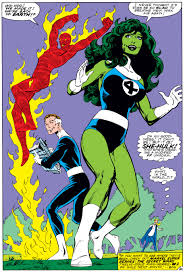 Byrne’s artwork on the Fantastic Four was the best of his career, in my opinion, as it had a lot to do with the fact he did it all, pencils and inks. In the last couple of years Jerry Ordway, Al Gordon, and even Joe SInnott were brought in on inks and although all are great artists none of them inked Byrne correctly. It also becomes apparent that there were issues outside of the book and that Byrne’s heart just wasn’t in his last few issues. But that being said, Byrne was incredibly prolific as he also wrote and drew Alpha Flight(Issues #1-#28) and later the Incredible Hulk (issues # 314-319) during this time as well as writing the solo Thing series, which is also a fantastic read. I’m still amazed that Byrne could write, draw, and ink two books a month while also writing a third and they were always of the highest quality.
Byrne’s artwork on the Fantastic Four was the best of his career, in my opinion, as it had a lot to do with the fact he did it all, pencils and inks. In the last couple of years Jerry Ordway, Al Gordon, and even Joe SInnott were brought in on inks and although all are great artists none of them inked Byrne correctly. It also becomes apparent that there were issues outside of the book and that Byrne’s heart just wasn’t in his last few issues. But that being said, Byrne was incredibly prolific as he also wrote and drew Alpha Flight(Issues #1-#28) and later the Incredible Hulk (issues # 314-319) during this time as well as writing the solo Thing series, which is also a fantastic read. I’m still amazed that Byrne could write, draw, and ink two books a month while also writing a third and they were always of the highest quality.
Byrne never returned to the FF, but he does pick up related titles in the ‘90s as he does a wonderful take on the Sub Mariner with Namor, the Sub Mariner and his wonderful, fourth wall-breaking take on The Sensational She-Hulk, which was a book way ahead of its time and a true treasure to read. I know Byrne has a “reputation” today but he truly is a giant of the genre with a prolific career and on The Fantastic Four he is at his zenith of creativity and his run is a true treat to read. It deserves all of the praise heaped upon it and is the second “Golden Age” of the title as Byrne’s love of Lee &Kirby jumps from the pages; that said, John Byrne makes the book his own and it’s a delightful read for any fan of the World’s Greatest Comic Magazine.

